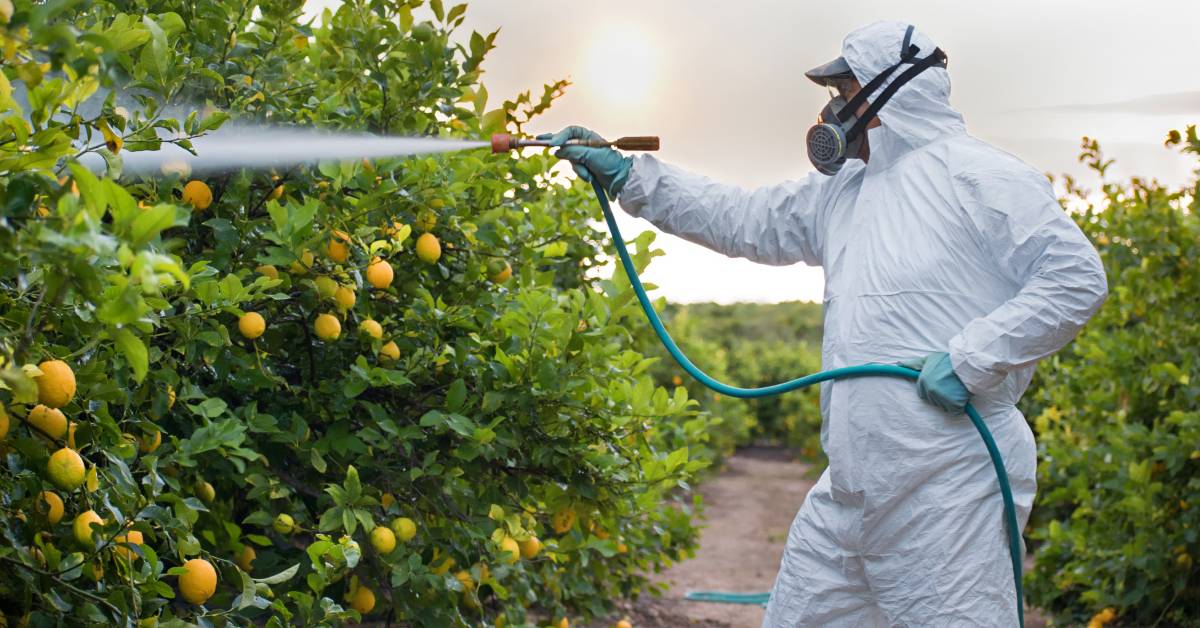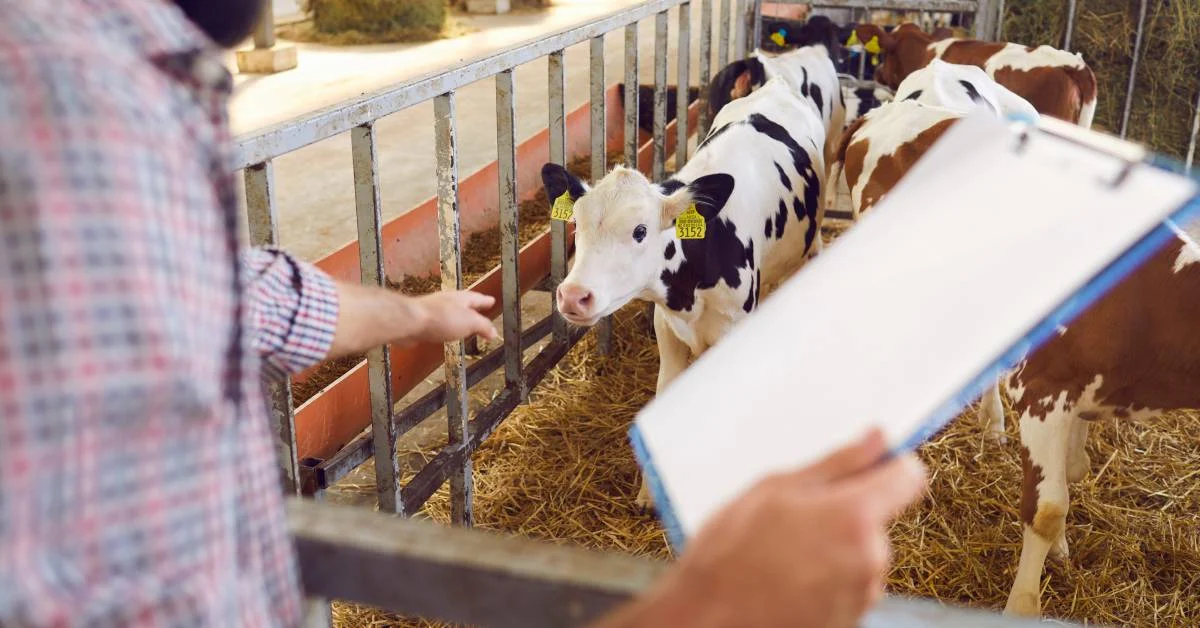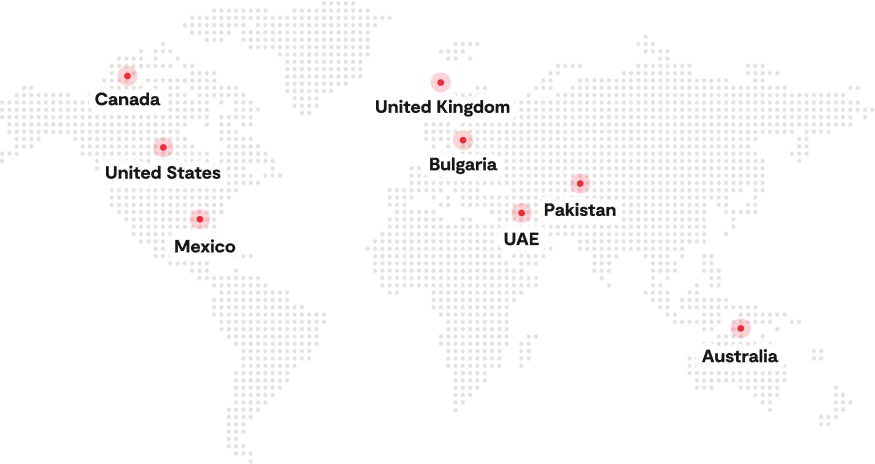If you’ve ever walked into your field early in the morning, coffee in hand, only to spot holes in your best leaves, you know that sinking feeling — pests are back.
According to the UN’s Food and Agriculture Organization (FAO), pests and diseases destroy up to 40 % of crop yields worldwide, costing around $220 billion each year. On the other hand, conventional chemical pesticides may kill pests quickly, but they harm beneficial insects, contaminate soil and water, and are excessively costly.
But here’s the good news: you don’t need to drench your crops in chemicals to keep them safe. Organic pest control methods are considered among the most effective crop management practices that can protect your yields while building healthier soil and ecosystems.
In this guide, we’ll explore field-tested and eco-friendly pest control methods you can start using today for organic crop protection. Whether you’re running a small organic farm, managing a large field of crops, or exploring sustainable practices for the first time, these strategies will help you keep pests in check naturally.
What is Organic Pest Control?
Organic pest control is managing weeds, insects, and diseases without synthetic pesticides or genetically modified organisms. Instead, it relies on biological, cultural, physical, and natural chemical methods that meet organic certification standards. You work with nature by fostering soil health, crop diversity, and beneficial organisms so pests can’t gain a foothold. When interventions are necessary, they’re derived from natural sources.
This approach reduces environmental contamination and preserves beneficial insects. Compared to conventional methods, organic pest control emphasises prevention and ecosystem balance, leading to healthier crops and soils. In short, it’s about safeguarding your farm’s productivity and the planet while producing marketable, chemical‐free food.
Top 10 Eco-Friendly Pest Control Methods
Using a combination of the following natural pest control methods can drastically reduce pest issues on your farm. Each technique is explained, followed by actionable steps so you can implement these organic farming pest control methods right away:

1. Soil Health Management to Prevent Pest Pressure
The foundation of organic plant pest control is healthy soil. A Cambridge survey found that 96% of organic farmers believe the soil microbiome plays a vital role in reducing pest pressure and supporting plant health. By fostering a living, balanced soil ecosystem, you make your crops less inviting to pests while boosting yield potential.
In modern farming, you can also leverage digital tools like IoT soil sensors and farm software for soil test tracking to ensure a healthy soil for your crops. Healthy soils encourage robust root systems, balanced nutrient uptake, and increased resistance to diseases and insect damage. You can think of soil health as your first line of defense, a preventative strategy that nips many pest problems in the bud. Here’s how to build that healthy soil organically:
- Apply compost and green manure: Add compost or grow green manure cover crops to boost organic matter and beneficial microbes. It improves nutrient cycling and suppresses pathogens.
- Monitoring soil nutrients: Conduct annual soil tests and adjust pH and nutrient levels using approved amendments, such as compost, bone meal, or rock phosphate. Balanced nutrition leads to sturdier plants.
- Use microbial amendments: Inoculate the soil with beneficial organisms, such as mycorrhizal fungi or Bacillus spp. These microbes form symbiotic relationships with roots, improving nutrient uptake and helping outcompete soilborne pests.
2. Crop Rotation and Biodiversity to Break Pest Cycles
If you grow the same crop in the same spot every year, pests that attack that crop (and the diseases they carry) build up like clockwork. The pest control methods in agriculture that have stood the test of time include crop rotation. Moreover, the crop rotation benefits in farming are just beyond your imagination.
By increasing biodiversity on your farm, you confuse pests and deny them their favorite hosts. Meanwhile, data show that diversifying crop rotations significantly reduces freshwater toxicity loads by 81–96% and decreases reliance by 25–51% on herbicides. The lesson is clear: organic farming pest control methods thrive on diversity. Here’s how to harness that:
- Rotate crop families annually: Avoid planting the same family in the same field each year. Follow a heavy feeder like corn with legumes or greens, depriving pests of a consistent host and suppressing soilborne pathogens.
- Use cover crops: Plant cover crops such as clover, rye, or mustard in fallow periods. They break pest cycles, add organic matter, and provide habitat for predators. Mustard, for example, biofumigates soil and reduces certain nematodes.
- Incorporate polyculture: Intercrop or mix species within fields. Combining grains with legumes or herbs can reduce pest spread and support natural enemies. For example, alternating corn and cowpea rows helps control pests and enhances soil nitrogen.
3. Companion Planting & Trap Cropping
Companion planting is the art of growing certain plants together to benefit one or both, a truly eco-friendly pest control method. Some companion plants naturally repel pests from your main crop, while others attract beneficial insects. As per research, it can lead to a 32% increase in total yields and support productivity 35% higher on average compared to monoculture production.
On the other hand, trap cropping means planting a sacrificial “decoy” crop that pests love more than your main crop, so they flock to it and spare your cash crop. Both techniques are clever organic methods of pest control that leverage plant-insect interactions. See how to implement them efficiently:
- Pest‐repellent companions: Plant marigolds, basil, or rosemary near vegetables to repel nematodes, mosquitoes, or aphids. Onions and leeks deter carrot flies when interplanted with carrots.
- Attract beneficials with insectary plants: Grow dill, fennel, or phacelia to provide nectar and pollen for hoverflies, ladybugs, and parasitoid wasps. These beneficials prey on aphids, mites, and caterpillars.
- Divert pests using trap crops: Surround cash crops with trap crops that pests prefer, then destroy the traps when pests congregate. For example, plant nasturtiums to attract aphids or early-planted mustard to draw flea beetles away from brassicas.
4. Resistant Varieties and Smart Planting Timing
Sometimes the easiest way to control a pest is to outsmart it from the start. If a particular crop variety has built-in resistance to a disease or pest, using it can prevent a lot of trouble without any extra work. Choosing such genetics means the pest either cannot thrive or causes much less damage.
Meanwhile, smart planting timing is another underrated pest management tactic where you avoid the peak pest periods. Both ways have been proven as a preventive tool in pest control organic farming. Here’s how to put these ideas into practice:
- Plant pest-resistant varieties: Choose cultivars labelled as resistant to common pests or diseases in your region, such as rust-resistant beans or nematode-resistant tomatoes. Consult extension services or seed catalogs for local recommendations.
- Smart sowing time: Adjust planting dates to avoid major pest flights. For example, early or late plantings can miss peaks of corn earworm or squash vine borer. Planting transplants instead of direct seeding can allow crops to establish before pests build up.
5. Farm Sanitation and Crop Hygiene
Keeping your fields and equipment clean might not sound like “pest control,” but it is one of the safest pest control methods you can practice. Many pests and diseases linger in plant debris, cull piles, or infected residues from the previous crop.
By rigorously removing or destroying these sources, you remove the shelter and breeding ground for pests. Moreover, cleaning equipment between fields or seasons is a simple but effective natural method of pest control to avoid unintentional contamination. Here are the key sanitation practices to implement
- Rogue out diseased or infested plants: Inspect crops regularly and remove any plants showing symptoms of severe infection or pest infestation. Destroy them off-site or compost them at high temperatures to prevent spread.
- Remove crop debris post-harvest: At the end of the season, clear dead plants, fallen fruits, and weeds. Deeply burying or composting residues disrupts overwintering sites for pests like squash bugs and corn borers.
- Sanitize tools, boots, and equipment: Wash tools and machinery between fields to prevent transferring pathogens or eggs. Clean boots or use footbaths when moving from infected to clean areas.
6. Physical Barriers and Row Covers
Excluding pests physically is one of the most effective, eco-friendly pest control methods. Also, lightweight row covers and reflective mulches can block insects while letting light and water through. In greenhouse environments, pest exclusion can be more precise with the right coverings and ventilation controls, all tracked and managed through greenhouse management software.
Studies on mesotunnel systems (fine mesh netting) show increased marketable yield of acorn squash by 46–54% compared to uncovered treatments. That’s why physical exclusion is a core strategy of pest control organic farming, especially for insect pests. Here’s how to use barriers and other physical tactics effectively:
- Barriers and row covers: Install floating row covers or insect netting over seedlings to keep out flea beetles, cucumber beetles, and cabbage worms. Secure the edges to prevent insects from entering, and remove covers when plants need pollination.
- Mulches & reflective films: Use reflective mulch or aluminum strips to repel aphids and whiteflies. Mulches also warm soil, suppress weeds, and reduce soil-borne disease.
- Physical tillage & weed flaming: Cultivate soil to disrupt soil-dwelling pests like cutworms and root maggots. Flame weeding not only kills weeds but can also destroy insect eggs on plant stems or soil surfaces.
7. Handpicking and Trapping Pests
When pest numbers are low or confined, good old-fashioned handpicking can be incredibly effective, and it’s as non-chemical a pest control method as it gets. Scouting your plants regularly and physically removing pests (and their eggs) can prevent a minor issue from becoming a major outbreak.
Although it’s labor-intensive for many organic growers, the time spent pays off in saved crops. Moreover, trapping is another natural pesticide alternative, letting the pests catch themselves. Here’s how to put handpicking and traps into action:
- Handpick caterpillars, beetles, and larvae: Regularly inspect plants and remove pests like tomato hornworms, Japanese beetles, and squash bugs by hand. Drop them into a bucket of soapy water. This targeted removal stops minor problems from becoming outbreaks.
- Use sticky traps and pheromone lures: Hang yellow or blue sticky cards near plants to catch flying pests like whiteflies, fungus gnats, and thrips. Pheromone traps lure specific pests (such as codling moths) and can help monitor or reduce populations.
- Install slug traps, beer baits, and light traps: Bury shallow containers of beer to attract and drown slugs. Night-light traps can draw and catch moths, reducing egg laying on crops.
8. Deploy Beneficial Insects & Predators
One of the most exciting parts of organic farming is enlisting nature’s own pest control squad, beneficial insects and predators. Think of ladybugs, lacewings, parasitic wasps, predatory mites, spiders, ground beetles, birds, bats, even frogs and toads. These creatures are the natural pest control methods that keep ecosystems in balance.
In fact, a single ladybug can eat about 50 aphids a day – up to 5,000 in its lifetime! That’s free pest control courtesy of biology. Farmers practicing organic crop protection often plant “banker plants” or insectary rows to keep these beneficials around and happy. Here’s how to cultivate an army of allies on your farm:
- Provide habitat: Plant flower strips, hedgerows, and insectary plants like yarrow, dill, and cosmos to supply nectar and pollen for beneficials. These habitats attract predators such as ladybugs, hoverflies, lacewings, and parasitic wasps.
- Release biocontrol agents: Purchase and release beneficial insects or nematodes to target specific pests. For example, Trichogramma wasps parasitize caterpillar eggs, and predatory mites control spider mites in greenhouses.
- Insectary plantings and flower strips: Maintain permanent beetle banks or wildflower borders to give predators year-round refuge and breeding sites. A rich diversity of plants supports more diverse predator communities.
9. Organic Botanical Pesticides & DIY Sprays
When cultural and biological methods aren’t enough and pest populations threaten your crop, organic farming allows the use of certain botanical pesticides and home-made sprays derived from natural sources. They tend to have lower toxicity to humans and break down faster in the environment than synthetic chemicals.
Common organic pest control methods in this category include: Neem oil, pyrethrin, garlic or hot pepper sprays, and insecticidal soaps or oils. These products should be used sparingly and as part of Integrated Pest Management. Here’s a rundown of key organic sprays and how to use them effectively:
- Neem oil & Pyrethrin: Use neem oil as a systemic repellent and growth inhibitor. For rapid reduction of beetles or caterpillars, apply pyrethrins carefully as spot treatments.
- Garlic and pepper sprays: Homemade garlic or chili pepper sprays can deter chewing insects; their strong odors and compounds irritate pests without leaving harmful residues.
- Horticultural soaps and oils: Insecticidal soaps and horticultural oils suffocate soft-bodied insects like aphids and mites. Apply directly to pest colonies.
- Vinegar solutions: Diluted vinegar can be used as a herbicide on weeds or to repel ants around crops.
10. Microbial and Mineral Solutions
Rounding out the organic arsenal are microbial pesticides and mineral-based products that offer powerful non-chemical pest control methods. These solutions exemplify pest control methods in organic farming that rely on natural substances with specific toxicity to pests but low risk to other life. Here’s how to make the most of them:
- Spray Bacillus Thuringiensis (BT) for caterpillars: BT is a soil bacterium that produces proteins deadly to certain insects when ingested. So, apply BT when caterpillars are small and actively feeding. Reapply after rain.
- Apply Spinosad carefully: Spinosad can rescue a crop from a moderate pest outbreak. Use it for tough pests like thrips or codling moths. Spray in the evening to protect bees.
- Dust Diatomaceous Earth for crawling insects: DE is a powder made of fossilized algae, and to us it feels like talc, but to a tiny insect it’s like crawling over shards of glass. Dust plant stems or soil with DE to deter slugs, ants, and beetles. Keep dry for effectiveness.
- Spray Kaolin clay or sulfur for soft-bodied pests: Kaolin forms a protective barrier; sulfur controls mites and some fungi. Reapply after rain and avoid use during hot weather.
When harvesting sustainably, you need every input optimized. To gain the maximum benefit, you can leverage crop disease detection software that helps you avoid wasted treatments, reduce spray costs, and improve yield.
Economic & Environmental Benefits of Natural Pest Control Methods
Switching to organic pest control methods delivers both financial and ecological wins for your farm. By reducing reliance on chemicals, you not only lower costs but also strengthen your market position and safeguard natural resources. Here’s why these eco-friendly pest control methods matter for your bottom line and the planet.
Lower Input Costs
Practices like crop rotation or composting cost little yet reduce pesticide use. Every synthetic spray you avoid puts money back in your pocket. Building healthy soil also cuts long-term pest pressure and chemical expenses.
Price Premiums & Market Access
Organic produce can sell for over 20% higher prices and fetch 40–60% more on average (USDA), with some crops like strawberries. It opens doors to premium markets, CSAs, and health-conscious buyers.
Health & Safety
Natural pest control methods mean no toxic chemical exposure for you, workers, or visiting customers, reducing health risks and potential medical costs.
Biodiversity Boost
Organically managed areas host about 30% more species, including pollinators and pest predators (FAO). As a result, it builds a self-sustaining pest control system while supporting conservation.
Improved Soil Health
Cover crops, compost, and rotation enhance soil structure, water retention, and resilience. Organic farms see 22% less soil erosion (FAO), preserving long-term productivity.
Cleaner Water
Organic systems reduce nitrate leaching by 28–39% (FAO), keeping local water sources safer for communities and aquatic life.
Climate Resilience
Healthy soils and diverse ecosystems help your farm withstand droughts, floods, and pest surges, ensuring stable yields in changing conditions.
A Holistic Approach for Organic Pest Control with Integrated Pest Management and Monitoring
The above-mentioned methods are quite effective in attaining the desired outcomes for controlling the pests organically, but they demand major effort. What if there is a way to cut all the hassle while keeping your pest control totally organic?
Today, technology has supercharged with Integrated Pest Management (IPM), giving you powerful tools to monitor pests, predict outbreaks, and make informed decisions in real time. By leveraging a fully equipped pest management software, you can analyze field data, receive alerts when conditions favor pest development, and act precisely when action thresholds are reached.
Key features that help organic farmers work smarter include:
- Integrated data and mobile access: Combine weather, pest, and crop health data; access on phones and tablets.
- Pest forecasting and mapping: Use GIS and remote sensing to forecast pest emergence and generate pest maps for targeted interventions.
- Record‐keeping and analytics: Log scouting data, track pesticide applications, and generate compliance reports.
- Compliance and education: Software often includes organic compliance checklists and integrated resources for IPM best practices.
By combining digital monitoring with cultural, biological, and chemical‐free measures, you’ll respond swiftly to threats, reduce labor, and enhance yields. So, connect with AgTech experts in case you want to learn more about this new technology that will enable you to control pests organically in a hassle-free environment.
FAQs
Does Organic Pest Control Really Work?
Yes. Organic pest control methods can deliver strong results, but they often demand more persistence and repeated treatments than chemical options. Natural pesticides can keep pest populations in check, though they may be less suited for tackling severe infestations or providing continuous year-round control.
What Is The Best Organic Pest Control Recommended And Why?
Neem oil is widely regarded as one of the most effective organic solutions. As a plant-based insecticide, it interferes with pests’ hormonal systems, stopping them from feeding, growing, and reproducing, making it a powerful yet eco-friendly choice for many crops.
Why Should I Use Organic Pest Control?
Organic pest control offers a safer, more sustainable alternative to synthetic pesticides. By relying on natural methods, it reduces the risk to pollinators, wildlife, farm workers, and consumers while still effectively managing harmful pests.
How Effective Are Organic Pest Control Methods?
Their effectiveness depends on the pest species, the level of infestation, and the chosen approach. Some organic solutions work as well as synthetic pesticides, while others may need more frequent applications or be less potent against large outbreaks.
What Are The Best Organic Pest Control Methods For Vegetables?
Top approaches include releasing beneficial insects, practicing companion planting, and applying natural sprays such as neem oil or insecticidal soap. Physical defenses like row covers or sprinkling diatomaceous earth can also shield vegetable crops from pests.
Can I Integrate Organic Pest Control With Technology?
Yes. Advances in smart farming tools now allow farmers to pair organic pest control with precision technology, enabling more targeted, efficient, and proactive pest management strategies. You can deploy pest management software for efficient pest control organically.







